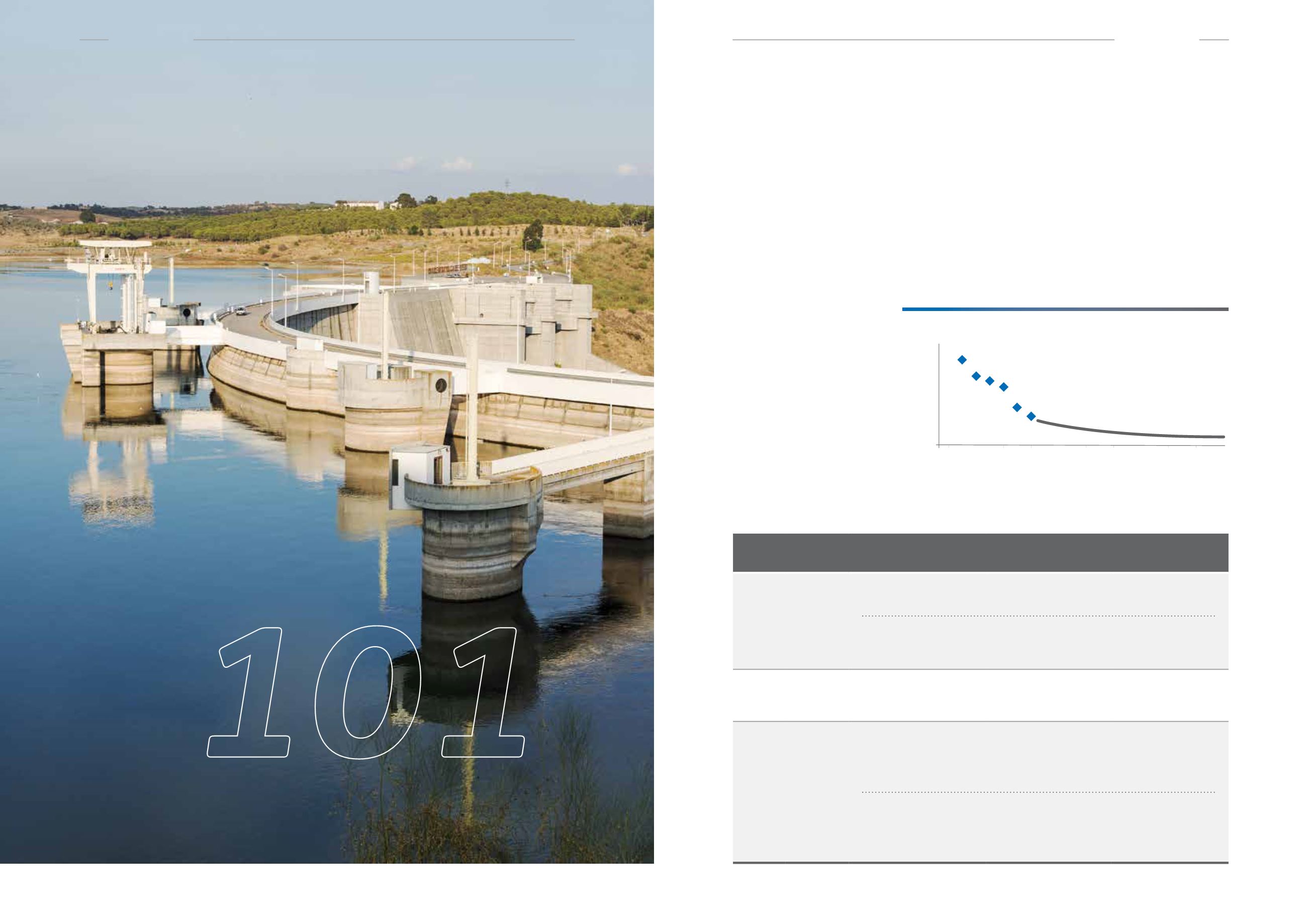

T
he most prevalent form of
energy storage today, in
terms of installed capacity, is
pumped hydro storage. This form
of storage has its origin in the
first dams that were put across
streams in order to provide
steady and reliable power for a
water wheel or similar device.
In a pumped hydro storage
facility, water is pumped uphill
into a reservoir when excess
generating capacity is available
(and electricity prices are low),
and then allowed to flow downhill
through turbines when demand
is higher (and electricity prices
are higher). The round trip
efficiency of this type of system
is approximately 80%. There are
more than 160 GW of pumped
storage installed globally today,
and the first is believed to be a
1 MWfacility built at Schaffhausen,
Switzerland. The largest currently
in operation is a 3 GW facility in
Bath County, Virginia, USA.
0
200
400
600
800
1,000
2010 2012 2014 2016 2018
2022
2020
2024
2028
2026
2030
($/kWh)
Year
LITHIUM-ION BATTERY PRICE FORECAST
Other forms of energy storage
in use today include batteries,
capacitors, molten salt and
other thermal storage systems,
flywheels, compressed air energy
storage systems, and others.
These have been deployed with
varying success around the
world. The primary drawback to
most of these storage systems
has been cost, but today Li-ion
batteries and pumped storage
represent the most commercially
feasible forms of storage.
In its New Energy Outlook 2017,
Bloomberg New Energy Finance
estimates that the cost of Li-ion
battery packs has fallen from
$1,000/kWh in 2010 to $273/kWh
in 2016. They forecast Li-ion
battery pack costs will fall to
approximately $73/kWh by 2030
due to several factors including:
technology improvements,
manufacturing scale, and market
competition among suppliers. It
is this exponential reduction in
costs that have opened up new
opportunities for battery energy
storage systems at scale.
Energy storage
TYPICAL GRID-SCALE STORAGE APPLICATIONS
Storage
Type
Discharge
Time
Technology
Application(s)
Typical Storage
Capacity
Short-
term
Seconds
to
minutes
Li-Ion Battery Energy
Storage System (BESS)
Grid Ancillary
Services
500 kWh – 40 MWh
Li-Ion BESS with AC BUS
connected for load ramping
or grid stabilization
Off-Grid/
Weak Grid
500 kWh – 2.5 MWh
Short-
term
Minutes
to
hours
Li-Ion BESS modular
enclosures or
purpose-built buildings
Renewables integration,
grid balancing services,
Off-Grid/Weak-Grid
500 kWh – 50+ MWh
Mid-
term
Hours
to
days
Li-Ion BESS modular
enclosures
Renewables integration,
grid balancing services,
Off-Grid/Weak-Grid,
energy shifting,
peak management
500 kWh –
1,200+ MWh
Fixed and variable speed
pumped hydro storage
Renewables integration,
grid balancing services,
Off-Grid/Weak-Grid,
energy shifting,
peak management
up to 6 GWh/d
Source: Bloomberg New Energy Finance
14 /
HYBRID SOLUTIONS
/
www.gepower.com/hybrid www.gepower.com/hybrid/
HYBRID SOLUTIONS
/ 15
t rends
t rends


















